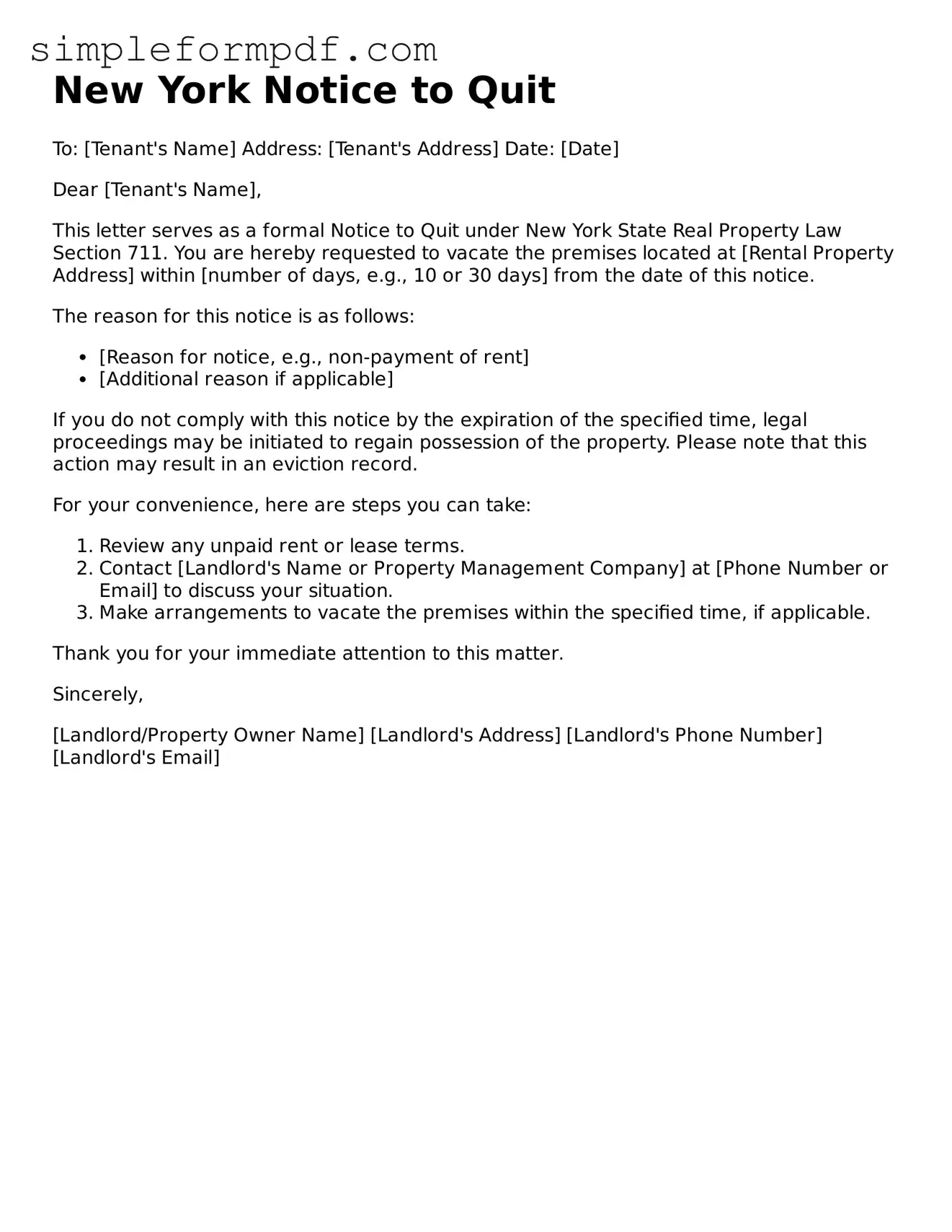New York Notice to Quit
To: [Tenant's Name]
Address: [Tenant's Address]
Date: [Date]
Dear [Tenant's Name],
This letter serves as a formal Notice to Quit under New York State Real Property Law Section 711. You are hereby requested to vacate the premises located at [Rental Property Address] within [number of days, e.g., 10 or 30 days] from the date of this notice.
The reason for this notice is as follows:
- [Reason for notice, e.g., non-payment of rent]
- [Additional reason if applicable]
If you do not comply with this notice by the expiration of the specified time, legal proceedings may be initiated to regain possession of the property. Please note that this action may result in an eviction record.
For your convenience, here are steps you can take:
- Review any unpaid rent or lease terms.
- Contact [Landlord's Name or Property Management Company] at [Phone Number or Email] to discuss your situation.
- Make arrangements to vacate the premises within the specified time, if applicable.
Thank you for your immediate attention to this matter.
Sincerely,
[Landlord/Property Owner Name]
[Landlord's Address]
[Landlord's Phone Number]
[Landlord's Email]
